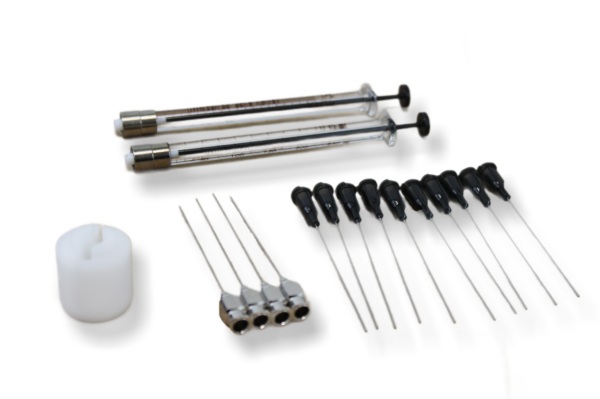|
November
2025 |
| Controlling Surface Energy to Combat Biofilms |
|
Biofilms are nothing more than sticky,
protective communities of nasty bacteria. They can pose a significant
and even deadly threat on the surfaces of medical devices, from
catheters to implants. Once a biofilm forms, the bacteria inside are
shielded from antibiotics and the body’s immune system, leading to
persistent, hard-to-treat infections. The fight against these microbial fortresses begins not with drugs, but with contact angle: specifically, controlling the surface energy of the medical device itself. The Role of Surface Energy and Wetting Surface energy governs how liquids (like blood or body fluid) interact with a solid surface—a process known as wetting. This interaction is quantifiable using a ramé-hart contact angle goniometer, which measures the contact angle of a droplet of liquid on a solid surface.
Engineering a Biofilm-Resistant Surface Research has shown that engineering the surface energy of medical devices is an effective strategy for preventing bacterial colonization. Three primary approaches are used: 1. Creating Highly Hydrophobic Surfaces: By reducing the surface energy, materials can be made extremely water-repellent, discouraging the initial attachment of microbes.1 The goal is to make the surface so unappealing that the adhesion forces cannot overcome the energy barrier. 2. Developing Zwitterionic2 or Highly Hydrophilic Surfaces: Some highly charged, high-energy surfaces (like certain hydrogels) bind water molecules so tightly that they create a protective "hydration layer." This water barrier physically blocks the bacteria from making direct contact with the surface. 3. A Zwitterionic surface should not be confused with a SLIPS surface. While both exhibit ultra low contact angle, the former repels foulants by forming a tightly bound water layer over a hydrophilic polymer while the latter is a solid surface that's permanently saturated with a lubricating immiscible liquid. A properly designed SLIPS surface can deprive bacteria the opportunity to adhere to the surface.3 In short, a SLIPS surface tricks the bacteria into thinking there is nowhere to latch on to. In all three cases, precise control and repeatable measurement are critical. ramé-hart contact angle goniometers and tensiometers are essential tools for R&D and quality control teams developing these next-generation surfaces. They provide the quantitative, real-time data necessary to validate surface treatments, ensure coating consistency, and correlate surface energy values with actual anti-biofilm performance. Hospital-acquired infections remain a major threat, often starting with biofilms on medical device surfaces. By applying the science of surface energy, researchers can develop next-generation, biofilm-resistant medical devices that save lives. Contact ramé-hart to learn more about how our instruments can power your research to achieve this vital goal. Notes |
| New Interns |
| We'd like to extend a warm welcome to our newest interns. Landon joined our team for a five week internship which is finishing up next week. Kendall started this week and will stay on for a number of months. They have been working on updating our documentation and making new videos and product brochures. Landon has helped with our newly redesigned Optical Overhead Imaging Kit (p/n 100-31). Both have been enormously helpful and are learning the instrument trade at the same time. |
| Product of the Month: Set of Spares for Manual Dispensing |
|
The parts that most frequently need to be
replaced are the Manual Syringes and Needles. This makes our Set of
Spares for Manual Dispensing, one of our most popular products. The set
includes (2) Manual Syringes, (4) 22g Reusable 304 Stainless Steel
Needles, (10) Disposable 22g Needles, and one Syringe Adapter.
The Set of Spare Parts can be ordered on our spare parts website here. The components of the set can also be purchased individually as needed and can be found here. Whatever spare parts you are in need of, we stock key parts which are ready for immediate dispatch. Bookmark our spare parts webstore https://www.ramehart.us/ so you can find the spare parts you need when the need arises. |
|
Regards,
Carl Clegg |


